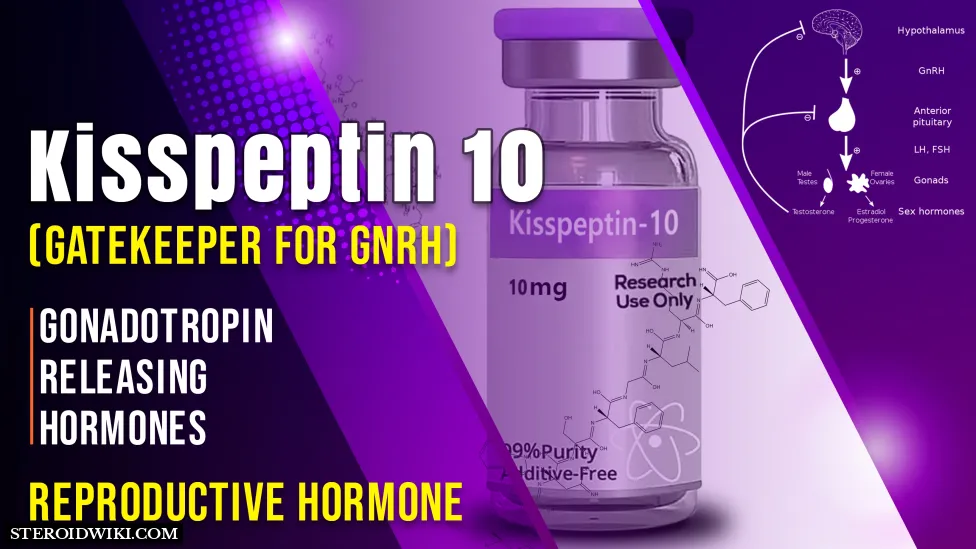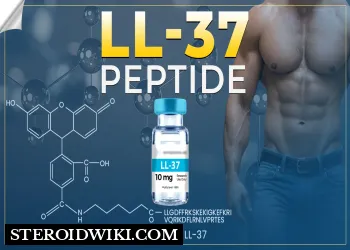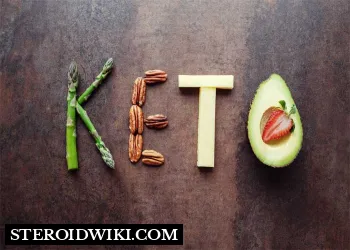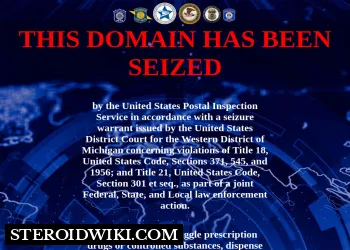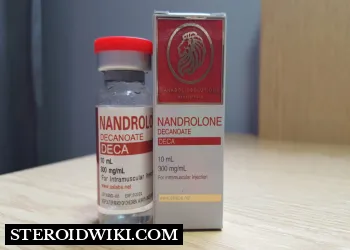Kisspeptin-10 (Kp-10)
Table of Content
- Description
- What is Kisspeptin-10?
- Mechanism of Action
- Structure of Kisspeptin-10
- Reproductive Hormones
- Impact on Pulse Frequency
- Kisspeptin-10 Role in Reproductive Physiology and Pubertal Development
- Dosage
- The Implication of Dosage on Hormone Release
- Side Effects
- Managing the Side Effects
- Benefits of Kisspeptin-10
- Who Should Use Kisspeptin-10?
- Kisspeptin-10 Cycle
- Kisspeptin-10 variants
- Conclusion
- References
Description
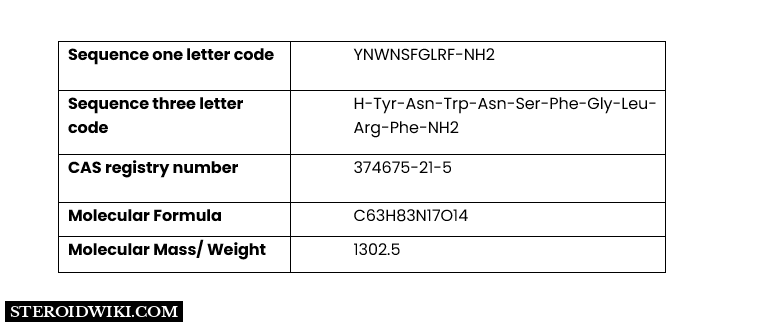
What is Kisspeptin-10?
Kisspeptin is a neurotransmitter that is encoded by the KISS1 gene in humans. It interacts with the kisspeptin receptor, GPR54. This relationship influences pituitary-gonadal function via regulating hypothalamic GnRH neurons. Notably, the Kisspeptin-GPR54 signaling pathway is critical in the beginning of gonadotropin-releasing hormone (GnRH) production throughout puberty. GPR54 signaling disruption has been shown to cause hypogonadotropic hypogonadism in both rats and humans.
Kisspeptin-10 is an essential peptide hormone in your body with important ramifications for human reproduction. When it comes to puberty and fertility, this powerful chemical takes center stage. You'll be fascinated by how kisspeptin functions as a master controller in your reproductive system.
Mechanism of Action
Kisspeptin-10 promotes GnRH release. It is produced in the hypothalamic arcuate and anteroventral paraventricular nuclei. When it activates the phospholipase C pathway involving hypothalamus cells, it interacts with the KISS1R receptor via activation of the KISS1 gene.
Kp enhanced insulin secretion from murine islets in a dose-dependent manner through a G-dependent pathway. Kisspeptin neurons form synapses with gonadotrophin-releasing hormone (GnRH) expressing neurons. Depolarisation of kisspeptin neurons leads to the depolarisation of GnRH neurons and subsequent modulation of luteinizing hormone (LH) and follicle-stimulating hormone (FSH) release.
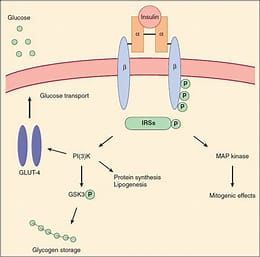
Structure of Kisspeptin-10
When you look closer at kisspeptin-10, you'll notice that its structure is incredibly complicated yet simple. This decapeptide, made up of only 10 amino acids (thus the '10' in its name), demonstrates nature's architectural brilliance.
It’s made up from:
- Arginine
- Phenylalanine
- Amide Nitrogen
- Tyrosine
Each component contributes to the overall function and effectiveness of this powerful tiny peptide in a unique way. The magic lies not only in each amino acid but also in their strategic location and structure inside the peptide chain—like chess pieces meticulously set on a chessboard, ready to combat any disruptive factors harming our reproductive health.
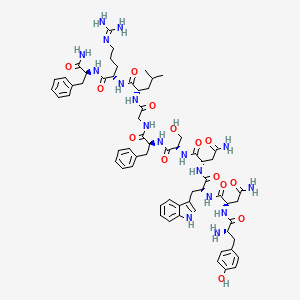
Here's a diagram of how Kisspeptin-10 functions in the body:
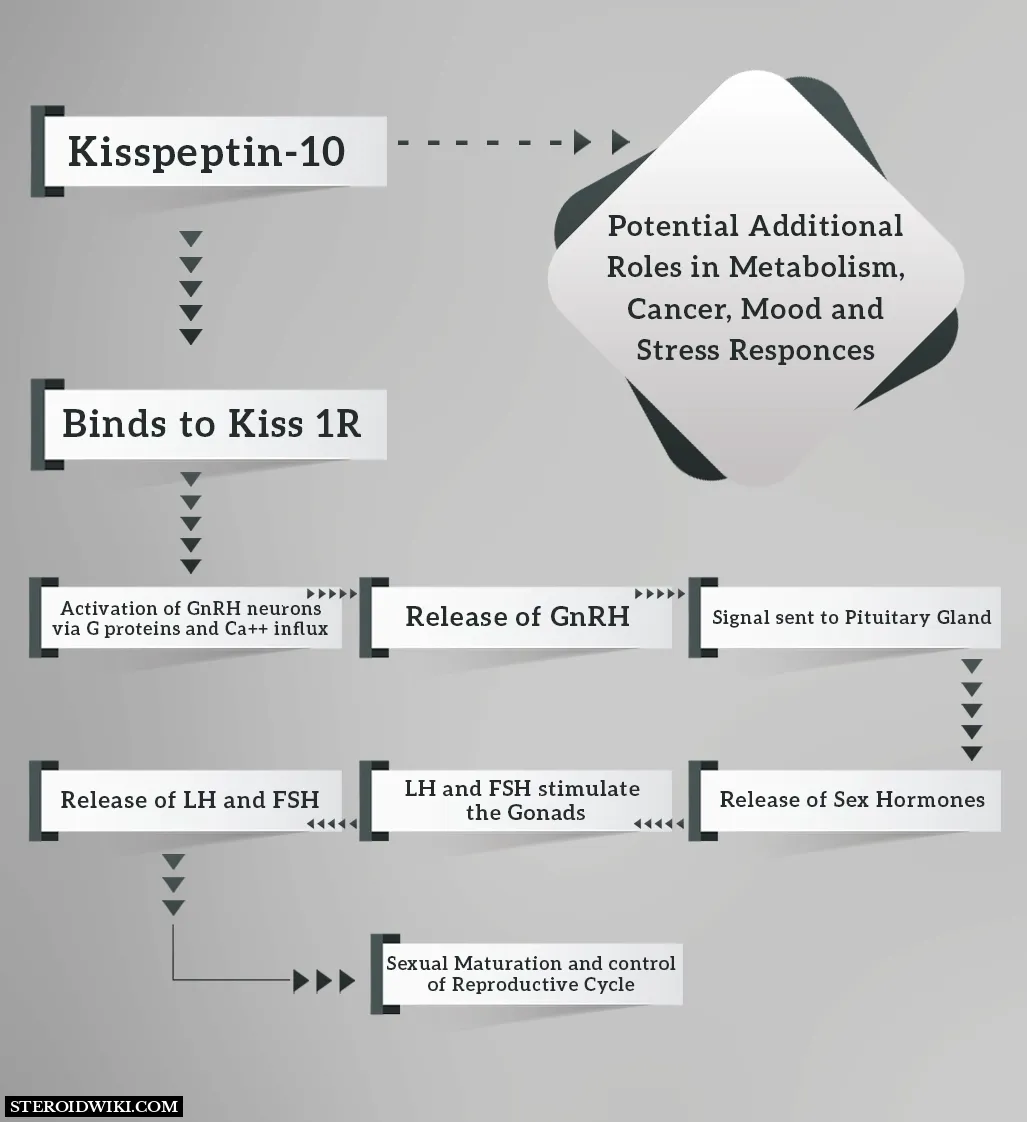
Reproductive Hormones
If you look into the science behind kisspeptin-10, you'll discover that its principal function is to induce the production of Gonadotropin-Releasing Hormone (GnRH). This hormone is critical in the regulation of reproduction. GnRH stimulates the pituitary gland to create two additional hormones: LH and FSH. Both are essential for both men's and women's fertility.
But here's the catch:
Kisspeptin isn't just about amount; it's also about time. For ovulation to occur properly in women, these hormones must be produced at certain periods during their menstrual cycle.
You might be asking where kisspeptin comes into all of this. The answer lies in the research. According to research, when kisspeptin levels rise, so do LH and FSH levels, indicating that there is a direct relationship between the two.
Here are some numbers:

That data clearly shows how powerful this little peptide can be!
Impact on Pulse Frequency
GnRH, you see, does not flood out all at once; rather, it pulses out from your brain every hour or so. And guess what contributes to the regulation of those pulses? Kisspeptins, our excellent companion!
Kisspeptin-10 levels have been demonstrated in studies to rise with GnRH pulse frequency. This implies more messages to your pituitary gland and maybe greater LH and FSH secretion - all of which are important for conception.
That's all there is to it!
You now understand how kisspeptin-10 functions in reproductive hormones. It's an important gear in our bodies' complicated machinery, and we're constantly learning about it every day. But one thing is certain: without it, reproduction as we know it now would be impossible.
Kisspeptin-10 Role in Reproductive Physiology and Pubertal Development
Kisspeptin-10 is synthesized in the hypothalamus by the arcuate and anteroventral paraventricular nuclei. Kisspeptin-10 interacts to the KISS1R receptor via KISS1 gene activation. Following binding, the Phospholipase C pathway involving hypothalamus cells is activated. The available data supports Kisspeptin's ultimate significance in the commencement of pubertal development in animals. The loss of the KISS1 gene or a disturbance in Kisspeptin production has been linked to an increased risk of developing hypogonadotropic hypogonadism (HH).
Kisspeptin-10 has been linked to follicular development, oocyte maturation, ovulation, ovarian steroidogenesis, spermatogenesis, the uterus, the placenta, and pregnancy. That being stated, the dynamic involvement of Kisspeptin-10 in the reproductive physiology of animals, including humans, may be deduced in a variety of ways. Nonetheless, additional study into Kisspeptin-10's mode of action is required.
Dosage
Various factors, including your age, gender, and overall health, determine the kisspeptin-10 dose. Doses in most studies have ranged from 0.1 to 3 micrograms per kilogram of body weight.
A common starting dosage might be 1 microgram per kilogram.
Here’s a simple breakdown:
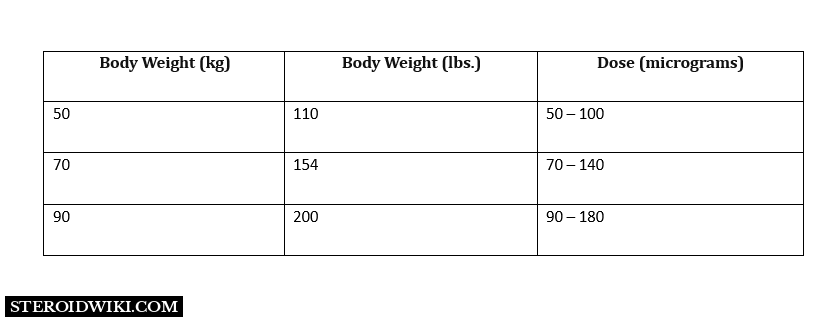
This is just intended to be a guide; always seek expert medical advice before choosing your own dose. It is critical that you only give your study participant one dosage. Once test results show that LH and FSH levels are starting to fall, repeat dosages can be given. You risk desensitizing your receptors if you re-dose too soon.
The Implication of Dosage on Hormone Release
Kisspeptin-10 stimulates the release of GnRH (gonadotropin-releasing hormone), which in turn stimulates the synthesis and release of sex hormones such as estrogen and testosterone. As a result, receiving the proper dose is critical for maintaining normal hormonal balance and fostering healthy reproduction.
Lower dosages tend to increase LH (luteinizing hormone)
Higher levels generally generate FSH (follicle-stimulating hormone)
Finding your sweet spot in terms of dose is so critical. And keep in mind that while Kisspeptin-10 shows promise in the field of reproductive health, it is not a panacea. To completely optimize your health, combine your supplement regimen with a well-balanced diet, frequent exercise, and enough sleep.
Side Effects
The most frequent symptoms are skin flushing or reddening, feeling hot or feverish, and a rise in blood pressure. Some persons may also develop headaches or dizziness as a result of kisspeptin-10-induced alterations in blood flow.
While most of these reactions are moderate and transient, there have been a few reports of more serious reactions, such as fast heartbeat or palpitations. It should be emphasized that these occurrences are uncommon and usually disappear after the medication is stopped.
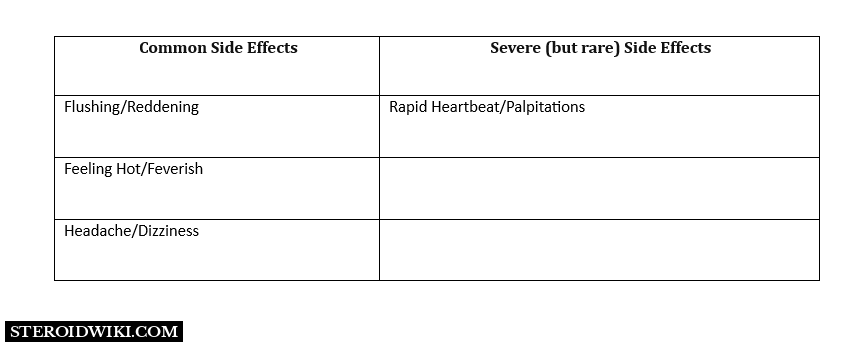
Managing the Side Effects
If you begin to experience symptoms such as flushing or feeling hot, consider utilizing fans or air conditioning systems to keep yourself cool. Drinking frequently can also help regulate body temperature while alleviating headaches produced by dehydration. Maintaining a healthy lifestyle that includes regular exercise and well-balanced food can help with high blood pressure!
Remember that while side effects might be irritating and even frightening at times, they are typically treatable with the appropriate attitude! So don't let them discourage you from receiving the assistance you require.
Benefits of Kisspeptin-10
Kisspeptin-10 is a gonadotropin-releasing hormone (GnRH) stimulant. Exogenous injection of this neuropeptide is thought to be a critical regulator of GnRH. Evidence showing the consequences of KISS1 gene mutations shows that Kisspeptin-10 plays an important role in early or delayed pubertal development.
Kisspeptin-10 is also known to boost LH levels in both men and women. As a result, Kisspeptin-10 is also an LH secretagogue. Although there are numerous human Kisspeptin isoforms, KP-10 is the most powerful due to its shorter half-life and faster beginning of action following intravenous injection. Several research has also shown that Kisspeptin-10 can increase sexual and emotional brain processes linked to olfaction, fear, anxiety, and sexual arousal via the Hypothalamic-pituitary-gonadal axis (HPG axis). According to research, Kisspeptin-10 may potentially establish a relationship between nutritional status and fertility. It can also boost testosterone levels and sex-related urges in men.
Who Should Use Kisspeptin-10?
Kisspeptin-10, although being a restricted and still developing study topic in reproductive sciences, aids those who are having fertility problems. Kisspeptin-10 is thought to stimulate and control the hypothalamic-pituitary-gonadal axis, regulating both men's and women's reproductive health. Hypogonadism, inadequate gonadal and sex steroids, and women at increased risk of developing OHSS (Ovarian Hyperstimulation Syndrome) can all be treated hypothetically with Kisspeptin-10.
However, before using Kisspeptin-10, one should have a comprehensive check-up of their reproductive health and talk with their doctor.
Kisspeptin-10 Cycle
Avoid consuming Kisspeptin-10 for more than four months in a row. After completing one cycle, you must take a 25-day rest before beginning another.
Kisspeptin-10 variants
Kisspeptin-10 is typically administered via intravenous injection. Kisspeptin pills are also available from some vendors.
Conclusion
Kisspeptin-10 is unquestionably a game-changer. For a good cause, this peptide has been taking place in the scientific community. It's no longer only about its importance in puberty and fertility. it also has possible effects on cancer studies, eating disorders, mental health issues, and so on.
You've seen how kisspeptin-10 can affect the hormonal balance and reproductive processes of your body. It plays an important part in human reproduction by boosting GnRH secretion, which leads to an increase in LH and FSH hormones, which are important actors in sperm and egg formation.
But wait, there's more! Kisspeptin-10 is also being studied for possible medicinal applications:
- Tumor growth inhibition
- Appetite suppression
- Treatment of mental health problems
References
- Jayasena, C.N., Nijher, G.M., Comninos, A.N., Abbara, A., Januszewki, A., Vaal, M.L., Sriskandarajah, L., Murphy, K.G., Farzad, Z., Ghatei, M.A. and Bloom, S.R., 2011. The effects of kisspeptin-10 on reproductive hormone release show sexual dimorphism in humans. The Journal of Clinical Endocrinology & Metabolism, 96(12), pp.E1963-E1972.
- Thompson, E.L., Patterson, M., Murphy, K.G., Smith, K.L., Dhillo, W.S., Todd, J.F., Ghatei, M.A. and Bloom, S.R., 2004. Central and peripheral administration of kisspeptin‐10 stimulates the hypothalamic‐pituitary‐gonadal axis. Journal of neuroendocrinology, 16(10), pp.850-858.
- Bilban, M., Ghaffari-Tabrizi, N., Hintermann, E., Bauer, S., Molzer, S., Zoratti, C., Malli, R., Sharabi, A., Hiden, U., Graier, W. and Knöfler, M., 2004. Kisspeptin-10, a KiSS-1/metastin-derived decapeptide, is a physiological invasion inhibitor of primary human trophoblasts. Journal of cell science, 117(8), pp.1319-1328.
- Akdağ, Turan, et al. “Level of kisspeptin-10 in patients with multiple sclerosis and the association between third ventricle diameter size and vitamin d level“. Physiology International, vol. 108, no. 2, 2021, p. 251-260.
- Curtis, A.E., Cooke, J.H., Baxter, J.E., Parkinson, J.R., Bataveljic, A., Ghatei, M.A., Bloom, S.R. and Murphy, K.G., 2010. A kisspeptin-10 analog with greater in vivo bioactivity than kisspeptin-10. American Journal of Physiology-Endocrinology and Metabolism, 298(2), pp.E296-E303.
- Jayasena, Channa, et al. “The effects of kisspeptin-10 on reproductive hormone release show sexual dimorphism in humans“. The Journal of Clinical Endocrinology &Amp; Metabolism, vol. 96, no. 12, 2011, p. E1963-E1972.
- Nabi, Ghulam, et al. “Changes in the responsiveness of the hypothalamic-pituitary-gonadal axis to kisspeptin-10 administration during pubertal transition in boys“. International Journal of Endocrinology, vol. 2018, 2018, p. 1-10.
- Telegdy, Gyula, et al. “The action of kisspeptin-13 on passive avoidance learning in mice. involvement of transmitters“. Behavioural Brain Research, vol. 243, 2013, p. 300-305.
Disclaimer: SteroidWiki doesn’t promote unlawful usage of any chemical compound. The knowledge presented in this article and on the website is purely for educational purposes. If you intend to use the information provided in this article for any purpose, please make sure to check & comply with the laws of your country or area.

